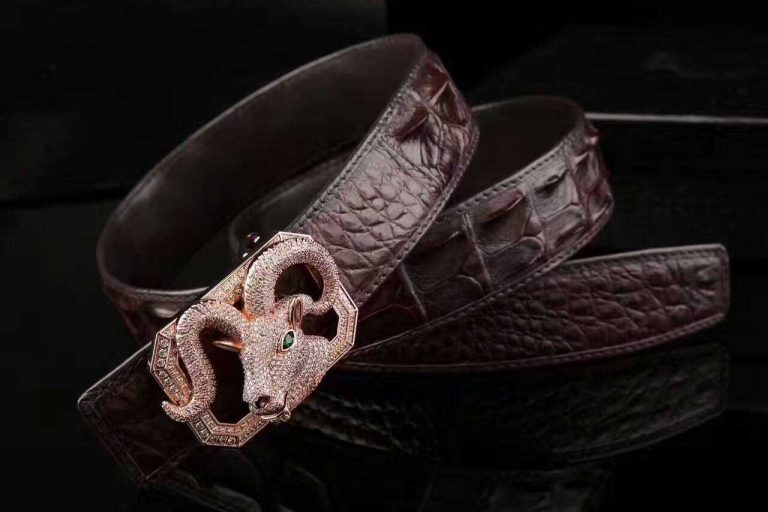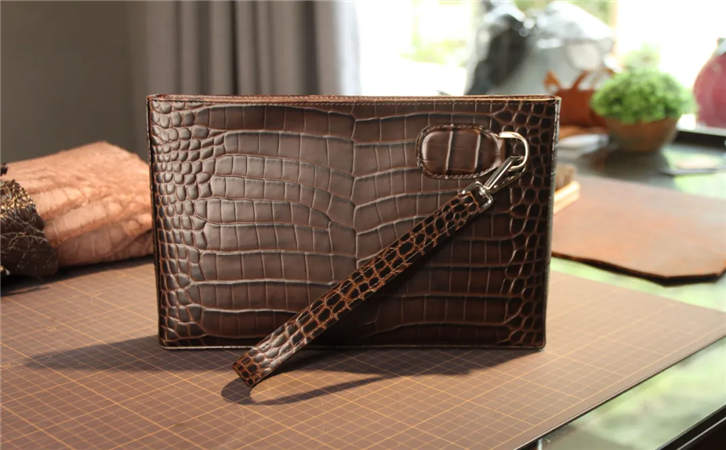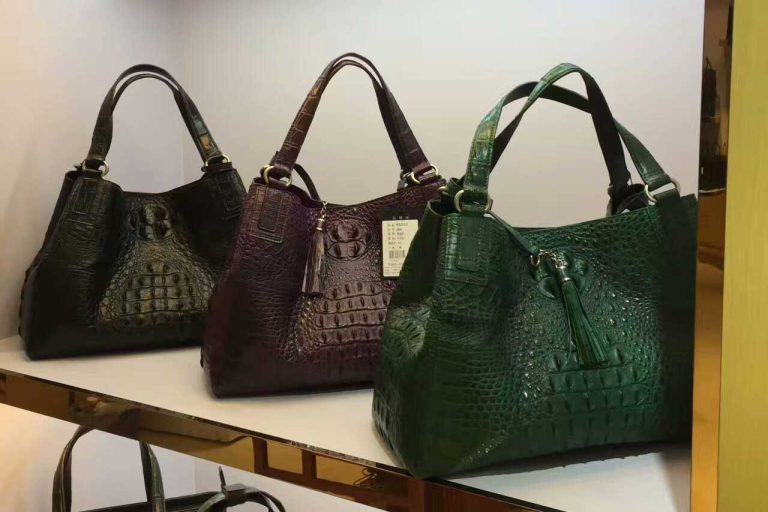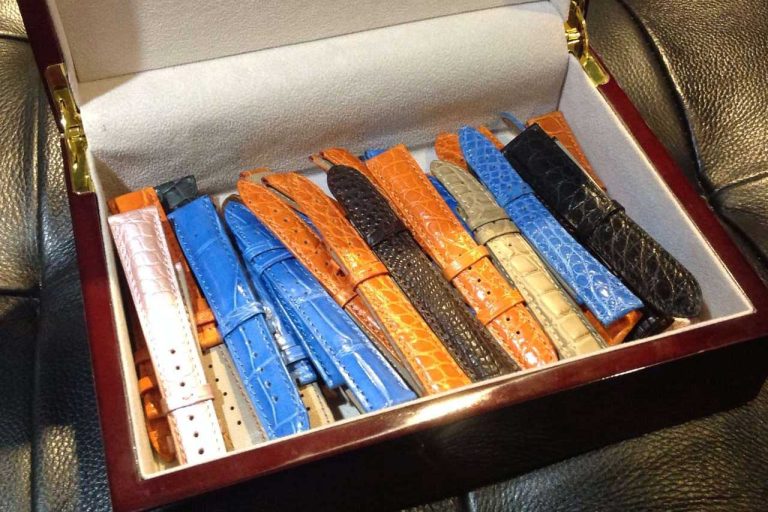Step 1: Look at the pattern
As a natural animal skin, crocodile skin does not grow completely symmetrically. There are natural bamboo patterns on crocodile leather. The grooves between the leather patterns are not only deep, but also have many fine and irregular longitudinal folds and gaps, which cannot be cloned from imitation leather. The pattern of imitation crocodile leather is more neat. If you see that the surface texture of crocodile leather goods is perfectly symmetrical, you should be suspicious. The pattern of real crocodile leather will have subtle changes in the lines, making the curves more vivid. The imitation crocodile skin pattern is very rigid and has no vivid feeling.
Step 2: Look at the scales and bones
Crocodiles have unevenly hard scale bones on their back and tail. They are tough and have a certain hardness but not like stone. They won’t look exactly the same or very symmetrical.
Step 3: Look at the pores
Crocodile skin with fine pores on its belly and sides must be good leather, but skin without pinholes is not necessarily fake crocodile skin. Don’t forget that alligator skin has no pores, so pores are not what distinguish genuine crocodile skin from fake. standard.
Step 4: Feel it
Don’t think that if it feels soft, it must be a real crocodile. Calfskin with imitation crocodile skin patterns will also feel soft, but it will not have a tight and tough texture. Real crocodile leather has greater resistance when pressed and better toughness. It feels firmer to the touch. When you press it, you can feel the tight combination of the pattern and the inner texture of the leather, with a concave and convex feeling. However, the pattern of imitation crocodile leather will feel looser, and you can feel the gaps between the embossed patterns when you press it.
The flexibility of crocodile skin determines that it is extremely resistant to bending. It will not deform after repeated bending and has good recovery properties.
Step 5: Look at the water absorption
Real crocodile skin will absorb water, and will turn darker after dripping water, leaving dark water marks, which will change back after a while. Imitation crocodile skin does not absorb water, and imitation crocodile skin has a film on it, which is water absorbent. Difference.







